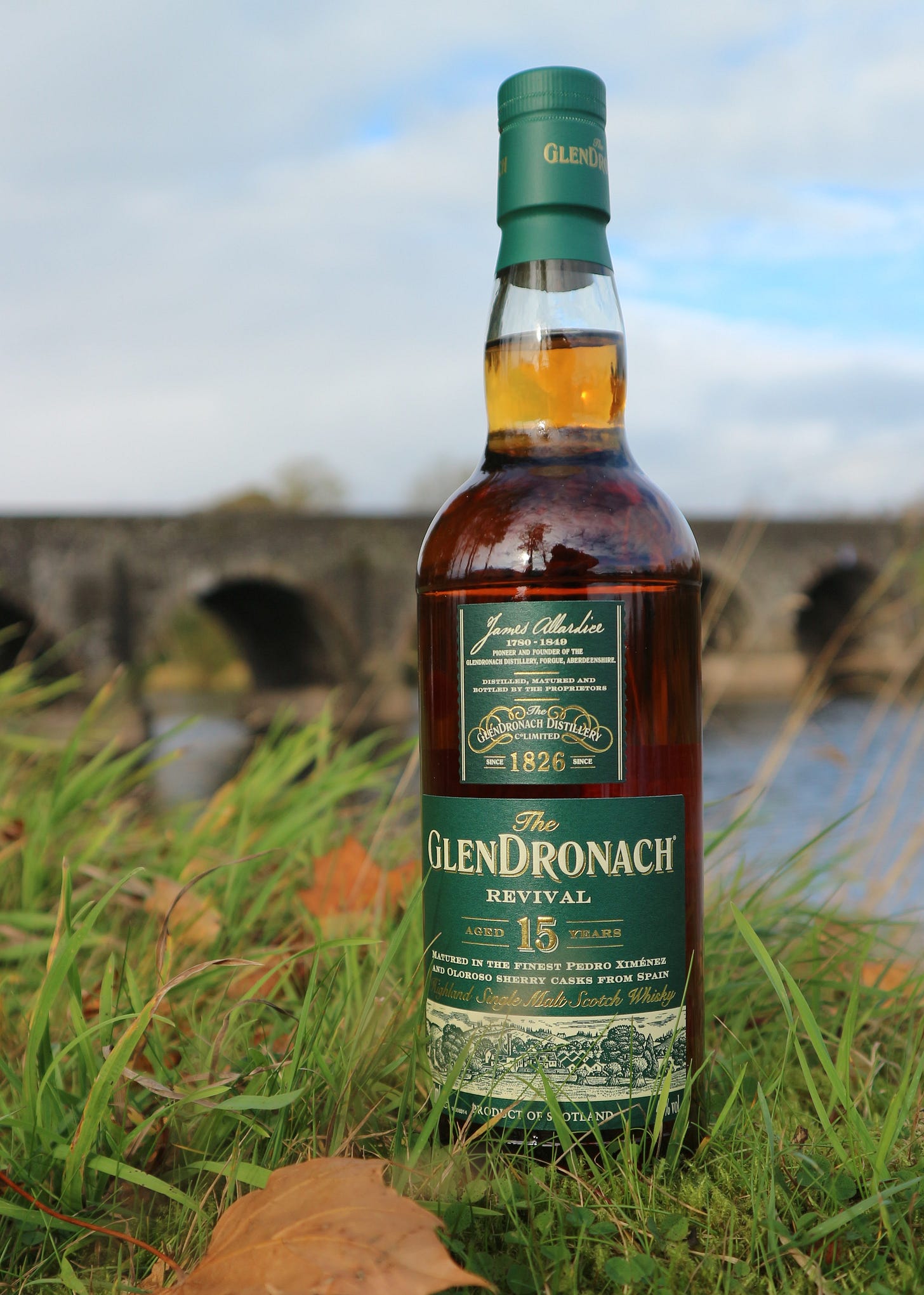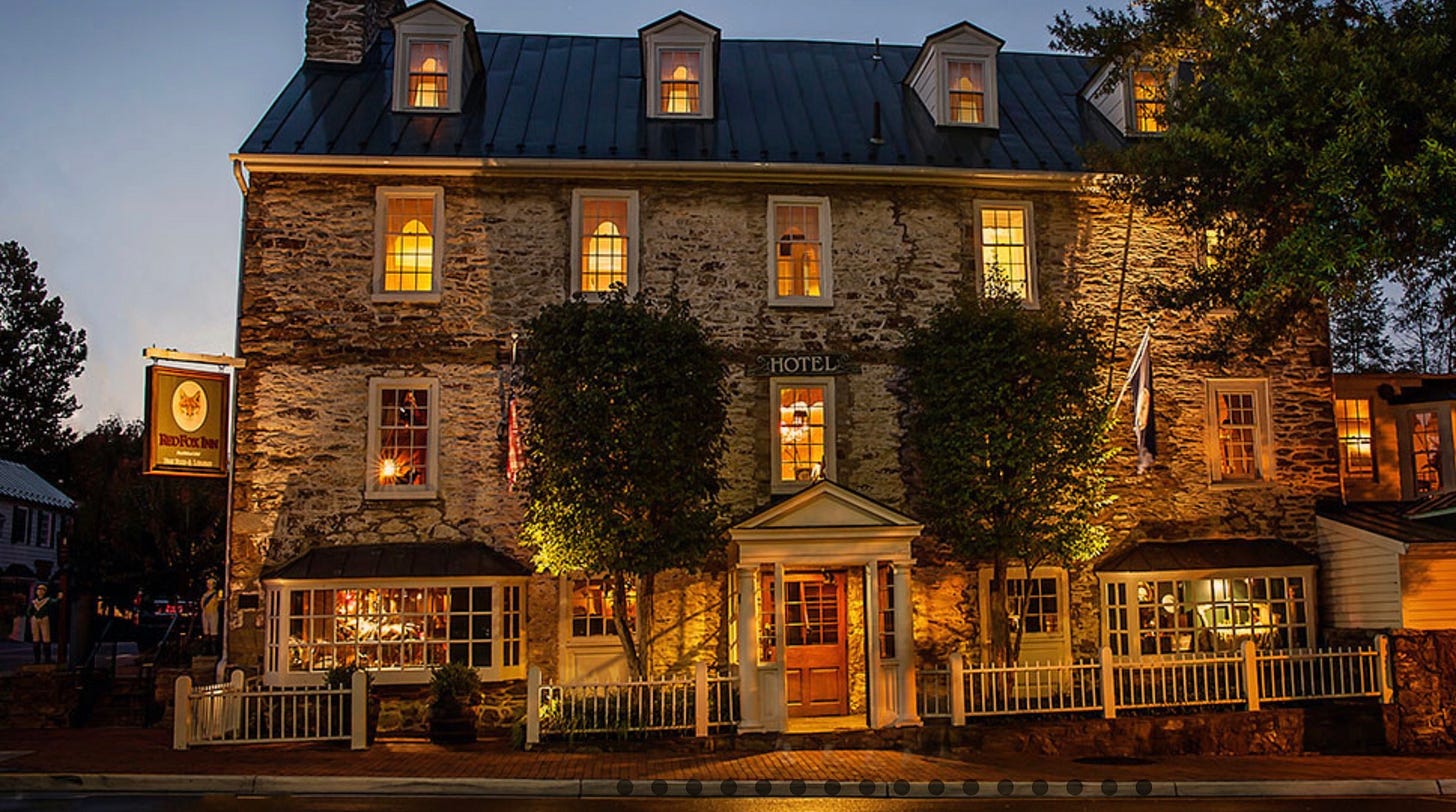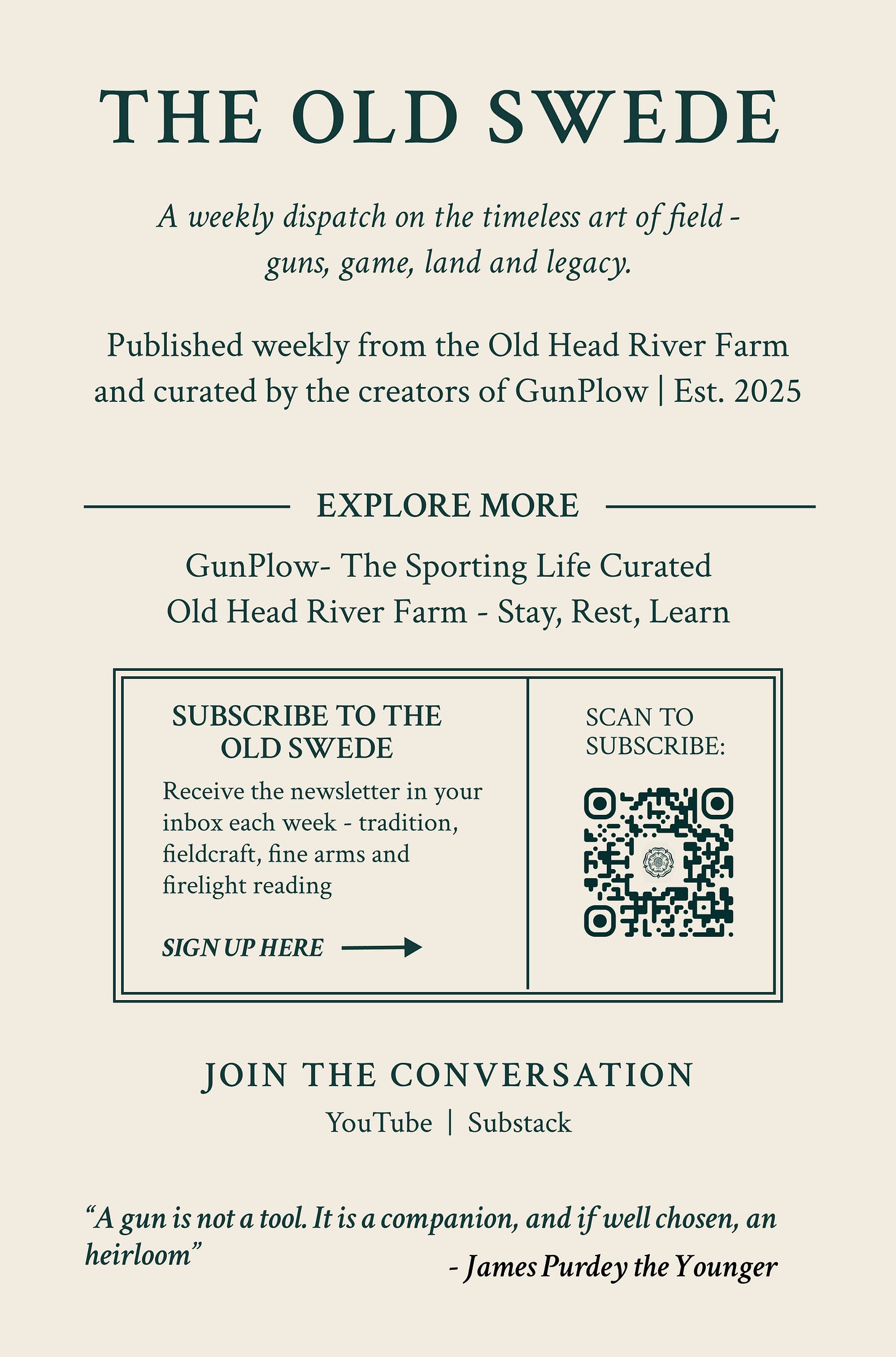The Old Swede: July 23rd, 2025
Gentleman in the Field: A Life Measured in Miles Walked, Dogs Led, and Meals Earned
How to Be Asked Again
The Code of the Sportsman
In the refined world of traditional field sports, few compliments are greater than being asked back. It means that your presence elevated the day, not merely through marksmanship, but by your comportment, consideration, and care for tradition. The highest praise in driven shooting is silent: a letter inviting you next season.
It begins before the shoot. Arrive early, never late. Dress the part—not to show off, but to show respect: pressed tweeds, polished boots, and weather-worn outerwear speak volumes. Greet every participant with good eye contact and a firm handshake. Know names, especially those of keepers, loaders, and beaters.
At the peg, safety and manners are paramount. Respect your neighbors' space. Let birds pass if they favor another. Take clean shots, praise others for theirs, and always stay alert to the horn and hand signals. A gentleman neither brags nor sulks.
When the horn sounds for elevenses, wait to be invited. Toast your host, ask after the keeper’s dogs, and compliment the fare. Field lunch is not a feeding trough but a convivial table; conversation, not consumption, is the point. Always offer to help clear.
At day's end, thank everyone involved. And in the days that follow, pen a proper letter of thanks. Handwritten, on quality stationery. Nothing affirms your character more than a thoughtful word, written in ink, posted with intention.
Suggested Reading:
The Shooting Man’s Creed by Sir Joseph Nickerson
The Unwritten Rules of the Field by T.W. Fenton
Kit Review
What to Carry, What to Leave, and Why Less is Often More
The best field kit is curated through seasons of trial, not marketing hype. Every seasoned sportsman has a system—lean, purposeful, and refined. Not minimalist, but essentialist.
Start with the cartridge bag: a mid-sized, 100 to 150 capacity, preferably canvas with leather trim. Brady, Croots, or Westley Richards make worthy options. Inside: earplugs, a small bottle of Rangoon oil, and a cut rag for barrels. Add leather gloves—thin enough for dexterity but durable in thorns. A pair of dry socks is wise insurance.
A waterproof field notebook or shoot logbook belongs in every coat pocket. Record shots taken, birds dropped, and lessons learned. Include a pencil; pens fail in weather.
A discreet hip flask is welcome, but not necessary until the end of the day. Choose a whisky or brandy with a story, not a gimmick. Add a wax-paper wrapped sandwich or cold grouse breast for a pause between drives.
Essentials include a pocket turn-screw, multi-tool with choke wrench, and a handkerchief—a field gentleman's multipurpose device. For dog men, a spare slip lead or whistle cord earns respect.
The difference between gear and kit is subtle but vital. Gear is bought. Kit is built. It bears stories, shows age with dignity, and teaches your successors what you valued.
Recommended Makers:
Spirit of the Week
Field Flasks, Game Whiskies, and When to Pour Them
The flask is more than a drinking tool—it is a social cue. When offered thoughtfully, it binds the line together. When brandished too early or too often, it disrupts the rhythm. Timing, as with shooting, is everything.
Traditionally, the English flask is slender and silver, tucked into a cartridge pouch or coat pocket. In America, pewter or stainless forms are more common. Contents vary by region—sloe gin in Sussex, bourbon in Carolina, applejack in New England. But quality matters more than origin.
One does not pour before the first shot. But at mid-morning elevenses or after the last drive, a shared nip is proper. Choose spirits with structure: GlenDronach 15 Revival has a sherried weight that pairs with cool air and game pie. Oban 14 is brisk and briny, ideal for the edge of a woodcock covert.
In southern shoots, Russell’s Reserve 10-Year or WhistlePig 12 offer rye spice and a generous finish. Homemade damson or sloe gin, matured quietly for months, remains the most personal.
Offer it without expectation. Receive with a smile. The flask's role is never to numb but to warm fingers, feelings, friendships.
Spirits Worth Bringing:
WhistlePig 12-Year Rye
Sipsmith Damson Gin
Oban 14
Pub Spotlight
The Post-Shoot Pint: Where Tradition Meets the Toast
Every proper shoot ends not with the final horn, but with a drink among comrades. The pub is the final drive of the day—a place where stories settle and reputations are forged over pork pies and pints.
In Britain, the shoot pub is sacred. The Gunton Arms in Norfolk blends estate tradition with artistic flair: red deer roast in the fireplace while Damien Hirst paintings peer down. The Black Swan at Oldstead offers pints beside gamey dishes like partridge pie and woodcock pate.
In America, these institutions take other forms: a bourbon poured by the fire at the Red Fox Inn in Virginia; a scotch passed around the hearth at the Stock Farm Club in Montana. They offer the same comfort: mud-caked boots, worn bar tops, and dogs sleeping under stools.
What defines a great post-shoot pub? Hooks for coats. A barman who remembers your usual. A chalkboard menu with steak and kidney pie or rabbit stew. Most importantly: atmosphere. It should whisper of tweed, powder, and pine.
Toast the beaters. Praise the dogs. Raise a glass to the one who missed every bird and smiled anyway.
Pubs & Bars Worth the Journey:
The Gunton Arms, Norfolk
The Fife Arms, Braemar
The Black Swan, Oldstead
Bonhomie
The Lost Art of Traveling Well with Others
True sportsmen are known not just by their shot, but by their grace in company. Bonhomie is the silent companion of every successful field day. It is the spirit that binds Guns, beaters, loaders, and keepers in shared joy and respect.
It begins early: with the offer of a spare pair of gloves, the passing of a flask, the kind word to the loader who's on his second day without rest. It’s seen when one stays behind to help pack the trailer, or when one quietly repairs a neighbor's sling in the Land Rover.
A gentleman of bonhomie does not correct others loudly, nor does he boast of his shots. He notices the dog that worked hardest and praises it. He invites the youngest Gun to speak. At the table, he listens more than he talks.
When the day ends, and the birds are counted, the man remembered most fondly is rarely the top shot—but the one who made the day smoother, warmer, better.
We live in an era of friction: fast travel, digital chatter, and solitary pursuits. But bonhomie is a salve to that. It is the smile offered in the rain. The shared cigar in the dusk. The invitation to return next year.
GunPlow Classic Library: Coming Soon
Here are this week’s suggested reads from the GunPlow Team:
A Sportsman’s Notebook by Ivan Turgenev
A Month in the Country by J.L. Carr
Letters and memoirs of George Bird Evans
The Shooting Man’s Creed by Sir Joseph Nickerson
The Unwritten Rules of the Field by T.W. Fenton






